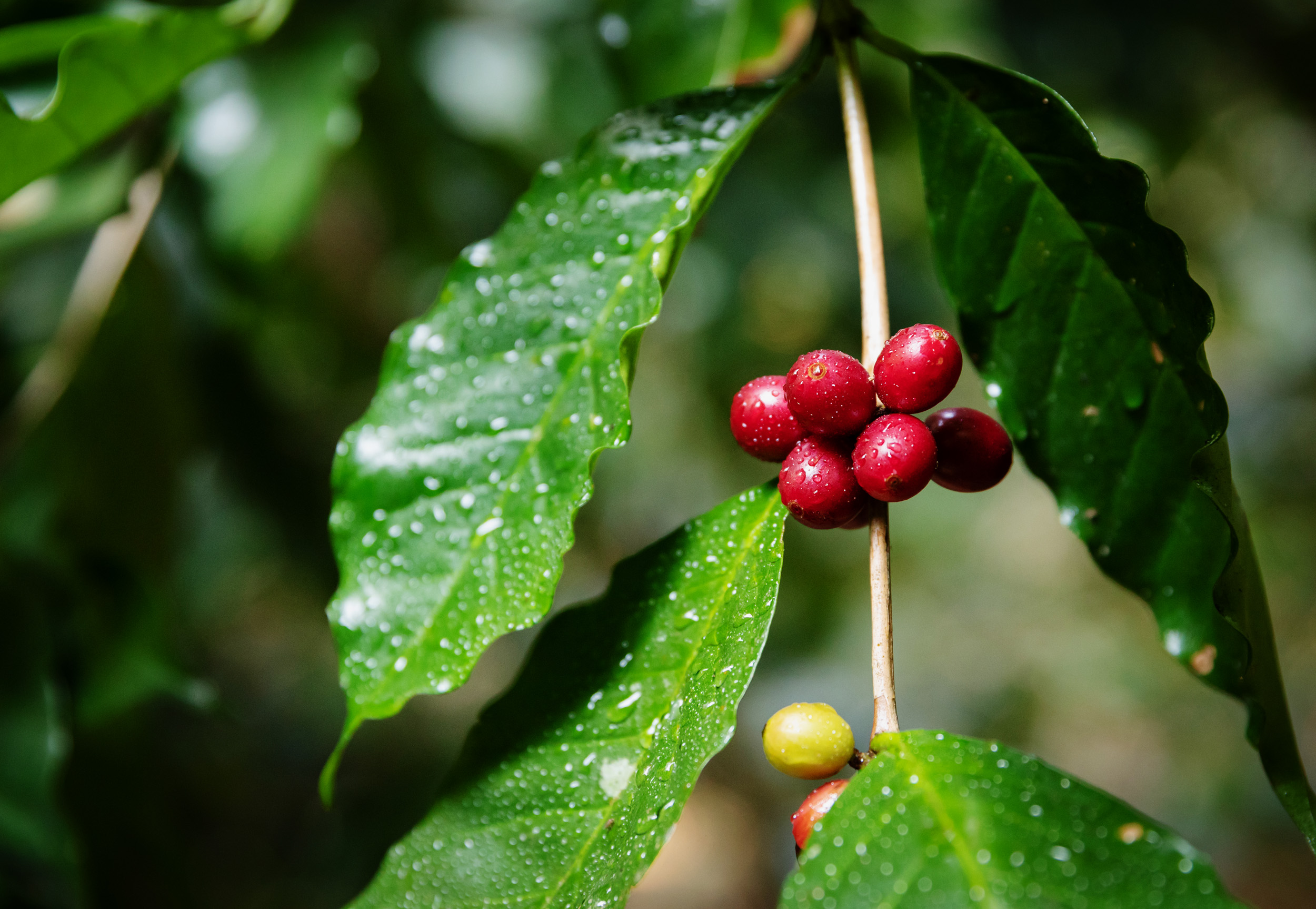The first arabica coffee seeds in Brazil, brought into the country by Francisco de Melho Palheta in 1727, were a strain of Typica, descended from coffee plants grown in the botanical gardens of eighteenth-century Amsterdam. From there, seeds were brought to the colonies of Suriname (then called Dutch Guyana), and from there into neighbouring French Guiana. Palheta smuggled coffee seeds out of French Guiana, and by 1770 the variety was established throughout Brazil (World Coffee Research 2020). Other strains of Typica were independently introduced into Brazil from Indonesia and India in subsequent years — most notably Sumatra, one of the parents of the important Mundo Novo variety, which was brought to Brazil in 1896 (Carvalho et al 1989).
 The Typica variety has long branches and large gaps between clusters of fruit (the internode distance).
The Typica variety has long branches and large gaps between clusters of fruit (the internode distance).
Typica is a gangly, conical tree, up to 4 metres in height. The large internodes and long branches make for low productivity and are challenging for harvesting. The variety is also highly susceptible to leaf rust and other diseases. Typica is considered to have good cup quality, however, so a small amount is still grown in Brazil.
Bourbon is known as Bourbon Vermelho (Red Bourbon) in Brazil, to distinguish it from Yellow Bourbon. Bourbon was first cultivated in Yemen before it was brought to plantations in India and Réunion island (then called Île Bourbon). Thanks to its shorter internodes, Bourbon is higher-yielding than Typica, so it was imported by the Brazilian government in 1859 (Carvalho et al 1989) and superior strains were selected by Brazilian research centres in the 1930s (BSCA 2022). Like Typica, Bourbon is prized for its cup quality but is highly susceptible to disease,